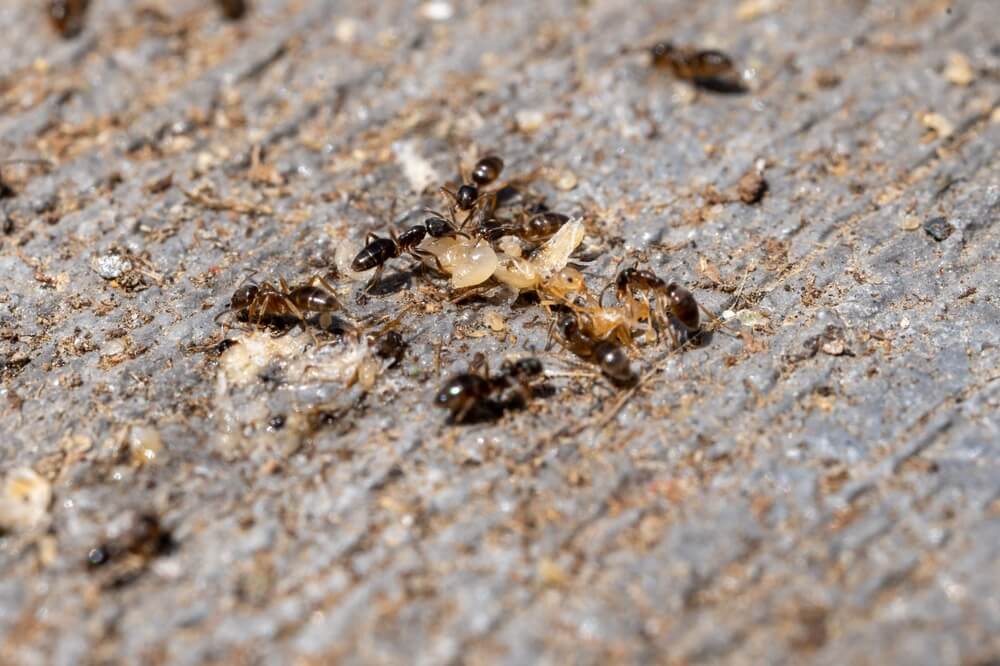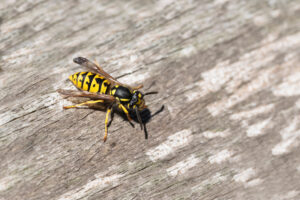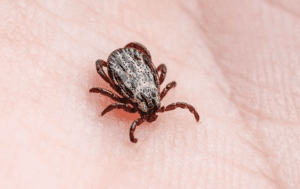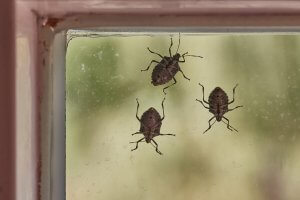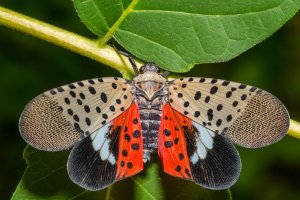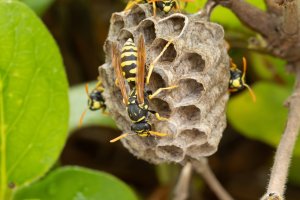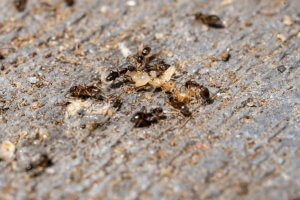At Bug Bully Rodent & Pest Control, we often get calls from homeowners, apartment renters, and restaurant owners who are puzzled by a persistent line of small dark ants appearing in their kitchens, bathrooms, or food preparation areas. These calls are especially common from residents in Worcester, Framingham, Northborough, Concord, and surrounding Central Massachusetts communities. In many cases, the culprit is the odorous house ant, a species with a unique reputation for the distinct smell it releases when crushed.
While they may be tiny, odorous house ants are resilient, adaptable, and remarkably persistent once they find a steady food source. Their behavior, biology, and nesting habits make them more than just an occasional nuisance. Left unchecked, they can become a year-round problem for both homes and commercial food establishments. Understanding these ants is the first step toward effective ant control and long-term prevention.
Identifying Odorous House Ants
Odorous house ants are small, typically measuring between one-sixteenth and one-eighth of an inch long. Their bodies are brown to black, and they have an unevenly shaped thorax when viewed from the side. One of the easiest ways to identify them, though not the most pleasant, is by their smell. When squished, they emit an odor often compared to rotten coconut. This unique characteristic is the source of their name.
Unlike some other ant species, odorous house ants do not sting. They can bite, but their bites are harmless to humans and usually not felt at all. What makes them such a problem is their ability to travel in large numbers and their habit of nesting in multiple locations. Their small size also allows them to slip into homes and restaurants through the tiniest gaps, making professional ant control a valuable investment when they appear.
Habits and Behavior
Odorous house ants are incredibly adaptable in their nesting and foraging habits. Outdoors, they commonly nest under rocks, logs, mulch, or leaf litter. They are just as comfortable nesting inside buildings, particularly in wall voids, beneath floors, and near moisture sources like sinks or water heaters. They are especially drawn to warm, moist environments.
These ants are opportunistic feeders. While they have a strong preference for sweet substances like honeydew from aphids or spilled sugary drinks, they will also eat proteins and grease. This broad diet is one reason they thrive in restaurants and residential kitchens alike. Once an odorous house ant colony discovers a reliable food source, workers leave behind pheromone trails to guide others to the same spot, creating a steady stream of ant traffic that can last for weeks.
Why They Are Common in Central Massachusetts
Massachusetts provides a perfect environment for odorous house ants. Our region’s warm, humid summers and cool, wet springs encourage outdoor colonies, while cold winters drive ants indoors in search of warmth and food. In Worcester, Framingham, Northborough, and Concord, we see increased activity in the spring and summer, but indoor infestations can persist year-round.
Many of the older homes and buildings in Central Massachusetts have structural gaps, aging wood, and moisture issues that provide ideal nesting conditions. In restaurants, the combination of frequent food preparation, busy storage areas, and occasional spills creates a consistent food source for these ants. Even in newer properties, odorous house ants can gain entry through utility lines, foundation cracks, or gaps in door frames.
How They Enter Homes and Restaurants
Odorous house ants are experts at finding ways indoors. They can enter through gaps in siding, cracks in the foundation, poorly sealed windows, or spaces around plumbing pipes. Outdoor colonies will send foragers into nearby buildings whenever weather conditions make food harder to find outside. Heavy rain, in particular, can drive ants indoors, as their outdoor nests may flood.
Once inside, they establish satellite nests close to food and water. These nests are smaller offshoots of the main colony and allow the ants to forage efficiently without traveling far. This behavior also makes them difficult to eliminate with do-it-yourself methods, because killing one nest rarely solves the whole problem.
The Challenges of Controlling Odorous House Ants
Controlling odorous house ants can be challenging for several reasons. First, they have multiple queens in each colony, which means the population can rebound quickly even if part of the colony is removed. Second, their tendency to form satellite colonies means that killing one group of ants may not affect the others.
Another issue is that odorous house ants can detect and avoid certain chemicals. Over-the-counter sprays often kill only the ants you see, leaving the nest untouched. In some cases, improper treatments can cause the colony to split into more nests, a process called budding, which makes the infestation even worse. This is why working with a professional ant exterminator who understands their biology is essential for long-term success.
Fun Facts About Odorous House Ants
- Their distinctive smell when crushed is caused by a chemical compound they release as a defense mechanism.
- They can travel up to 100 feet in search of food, which means their nests may be far from where you see them.
- Odorous house ants are surprisingly fast movers, especially when disturbed.
- In the wild, they protect and farm aphids, feeding on the sweet honeydew aphids produce.
- Colonies can contain thousands of workers and multiple queens, making them a truly formidable opponent for anyone attempting DIY ant control.
Why Restaurants Need to Be Extra Careful
For restaurant owners, odorous house ants are more than just an annoyance. Their presence can undermine customer confidence, affect health inspections, and lead to food contamination. Because they are small and quick, they can easily infiltrate stored food, cooking areas, and even serving stations.
Restaurants in Worcester and surrounding areas often face challenges with odorous house ants because of the high turnover of food deliveries, waste disposal routines, and the constant movement of staff between indoor and outdoor areas. Even the cleanest kitchen can experience a problem if ants locate a source of sugar or grease. Regular inspections and preventive treatments from an experienced ant exterminator can help restaurants maintain their reputation and comply with health codes.
Common Questions About Odorous House Ants
- How do I know if I have odorous house ants or another species?
The easiest way to identify them is by their smell when crushed. They are small, dark, and have an uneven thorax. A pest control professional can provide confirmation. - Are odorous house ants dangerous to people?
They do not sting and their bites are harmless, but they can contaminate food and surfaces by traveling through unsanitary areas before entering kitchens. - Can I get rid of them with store-bought ant bait?
Some baits work temporarily, but odorous house ants are selective and may ignore certain baits. Professional-grade baits and treatment strategies are more effective for eliminating entire colonies. - Do they only come indoors in the summer?
While infestations are more common in warm months, odorous house ants can live indoors year-round if they find warmth, moisture, and food. - How quickly can an infestation grow?
Very quickly. Because they have multiple queens, colonies can expand rapidly, especially if food sources remain available.
Professional Ant Control Methods
At Bug Bully Rodent & Pest Control, we take a methodical approach to odorous house ant infestations. Our process begins with a detailed inspection to locate all nests, identify entry points, and determine what is attracting the ants. We use targeted treatments that reach the heart of the colony, not just the visible workers.
Our strategy may involve using baits that the ants carry back to the nest, affecting the entire population, including queens. We also address environmental factors like moisture and structural gaps to reduce the chances of a future infestation. For restaurants, we offer discreet service options to minimize any disruption to business operations.
Prevention Tips for Homeowners
Preventing odorous house ants starts with eliminating the factors that attract them. Keep all food stored in sealed containers, wipe up spills promptly, and take out trash regularly. Check for and repair moisture issues such as leaky pipes, roof leaks, or condensation near windows.
Outdoors, keep mulch, firewood, and vegetation away from the foundation of your home. Trim back branches that touch the house, as ants can use them as a bridge. Seal cracks and gaps where utilities enter the building to limit potential entry points.
Prevention Tips for Restaurants
In restaurants, prevention involves both structural maintenance and strict cleaning practices. Ensure that all food is stored off the floor and in tightly sealed containers. Clean food prep surfaces regularly throughout the day, and do not let dirty dishes pile up. Empty trash bins frequently and keep dumpsters away from building entrances.
Inspect incoming deliveries for signs of ants, as they can sometimes arrive hidden in packaging. Coordinate with your pest control provider for regular monitoring and preventive treatments.
Why DIY Ant Control Often Fails
Do-it-yourself ant control often falls short because odorous house ants are resilient and have complex nesting habits. Sprays may kill the ants you see, but they rarely affect the queens or satellite colonies. In some cases, the wrong approach can actually cause the infestation to spread.
Professional treatments focus on eliminating the entire colony through targeted baiting and barrier applications. They also include preventive measures to keep ants from returning. For a lasting solution, expert intervention is the most reliable option.
The Role of Seasonality in Ant Activity
While odorous house ants can be active year-round indoors, their outdoor activity peaks in late spring and summer. During these months, colonies are at their largest and most active. Weather patterns can also influence their behavior. Prolonged rain can flood outdoor nests and drive ants indoors, while drought can send them searching for moisture inside.
Understanding these seasonal patterns can help homeowners and business owners plan preventive treatments at the right times of year.
Why Odorous House Ants Thrive in Massachusetts
Massachusetts has a combination of urban, suburban, and rural areas, which means odorous house ants have access to a wide range of habitats. Our region’s vegetation provides plenty of honeydew from aphids, their favorite natural food source. Urban development offers countless opportunities for nesting in cracks, voids, and landscaped areas.
In cities like Worcester and towns like Framingham, Northborough, and Concord, ants can move easily between outdoor and indoor environments. This adaptability is one reason why they are such a persistent pest across the state.
The Takeaway
Odorous house ants may be small, but their impact on homes, apartments, and restaurants can be significant. Their resilience, adaptability, and ability to establish multiple nests make them one of the more challenging ants to control in Massachusetts. For homeowners, they represent an ongoing annoyance that can compromise cleanliness. For restaurant owners, they can threaten customer satisfaction and health compliance.
By understanding their habits, recognizing the signs of infestation, and acting quickly with professional help, you can protect your property from these persistent pests. At Bug Bully Rodent & Pest Control, we combine experience, precision, and a deep understanding of Massachusetts pest behavior to provide lasting ant control solutions. Whether you are in Worcester, Framingham, Northborough, or Concord, we are ready to help you keep your property ant-free.

